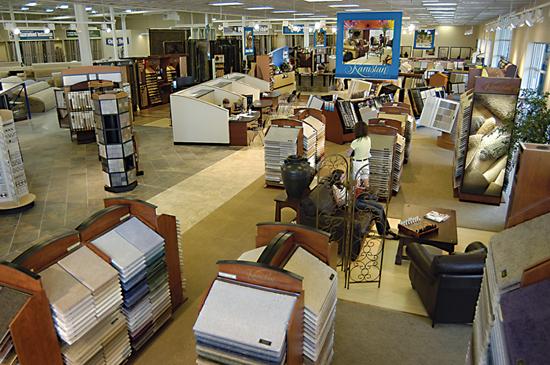Focus 100 Retail - November 2012
By Darius Helm
It’s taken six years, but it looks like the housing market has finally stabilized, and all signs suggest that the market is entering, albeit sluggishly, into a growth mode. Nearly all the retailers and contractors on the Top 100 list are reporting that they anticipate growth this year, and it looks like the average growth will be about 5% or 6%. Because many of those on the list are market leaders, it’s likely that total growth in the residential flooring market will be somewhat lower.
Competition is still extremely fierce. After all, consumers have less disposable income than in recent years, and flooring is a postponable item. Furthermore, the average square footage per capita has gone down in the last six years. Diversification has been an effective strategy for many retailers, both in terms of products—window treatments, countertops—and markets like mainstreet commercial and even bid.
The overall trajectory of sales this year was guided by the overall weather trend, much like it was last year. For most of the nation, it was an unnaturally warm winter. In fact, it was the fourth warmest winter on record, according to data compiled since the 1890s, and the warmest since the turn of the century—only the Southwest and lower Rocky Mountain states and the Pacific Northwest (nine states in all) experienced normal winters.
The warm, dry weather allowed for a greater number of builder and remodeling projects than normal, so the first few months of the year were strong. By springtime, which generally experiences a surge of flooring activity, much of the demand had been released and those months were slower than normal. For many retailers, demand didn’t start to build again until well into the summer months, and by most accounts that activity has continued into the fall, albeit somewhat tempered by the uncertainty and fear-mongering brought about by election year politics.
Most of the relevant economic indicators are now pointing in the right direction. Consumer confidence is the highest it’s been in nearly five years, and the stock market is back up to where it was in 2007 before the financial crisis. Unemployment is down to 7.8% compared to 9.1% this time last year and 9.6% in October 2010.
It’s worth noting that these statistics actually paint a rosier picture than the reality on the ground. Economic growth in the U.S. is still fairly anemic at 2%, and on top of that the global picture remains fragile, with many of the world’s leading economies still flirting with disaster. And while U.S. unemployment numbers may be falling, many of those who are finally getting jobs are trading down. At the same time, energy costs remain high and are poised to continue their inexorable rise, and next year promises to bring significant increases in food prices, as we start to feel the impact of this year’s widespread drought.
There are big disparities between the states when it comes to unemployment rates. At one end is North Dakota with a 3% unemployment rate (thanks to the oil boom in the Bakken), with Nebraska and South Dakota close behind (3.9% and 4.4%, respectively). At the other end is Nevada at 11.8%, Rhode Island at 10.5%, California at 10.2%, New Jersey at 9.8% and North Carolina at 9.6%.
In terms of the monthly drop in unemployment rates from August to September, it was good news for California, which along with South Carolina and Utah posted the biggest drops (0.4%, 0.5% and 0.4%, respectively). States with 0.3% drops included Nevada, Hawaii, Idaho, Kansas, Illinois, Missouri, Louisiana and Iowa. The states that posted no drop in unemployment—Maine, Virginia, New Hampshire and North Dakota—all have lower unemployment numbers than the national average.
For the complete story of the Top 100 Retailers, see the November 2012 issue of Floor Focus Magazine.
Copyright 2012 Floor Focus
